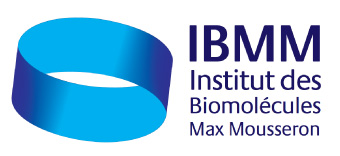Diversity to discovery – the CIStER platform for glycan editing
Séminaire Chimie ED459 / ICGM
Prof. Srinivas
Le Jeudi 23 Novembre 2023 à 14h
CNRS, salle Balard-1 (bâtiment Balard RdC, 1919 route de Mende)
Date de début : 2023-11-23 14:00:00
Date de fin : 2023-11-23 15:30:00
Lieu : CNRS salle Balard-1 (site RdM bât. Balard RdC)
Intervenant : Prof. Srinivas
G2L Gold-catalyzed Glycosidation Laboratory, IISER Pune, India
Gold and sugar allured Mankind for many centuries and continue to impact economics even now. A series of serendipitous observations during 2005–06 in the group culminated in the discovery of a novel glycosylation protocol by amalgamating the elegance from the chemistry of gold with that of saccharides.[1] Thus identified procedure has undergone several iterative modifications in the group over the last decade to make it versatile.[2] The latest protocol of alkynyl glycosyl carbonate donors from has opened a new vista of opportunities for the syntheses of giant oligosaccharides which are otherwise quite challenging to accomplish.[3] To exemplify, the glycocalyx of Mycobacterium tuberculosis comprising xenobiotic arabinofuranose and galactofuranose was targeted. Combining the bioinspired stereoselective synthesis of 1,2-cis and trans– furanosides and the new glycosidation method, the synthesis of a heneicosasaccharide containing 19 Araf- residues and 2 Galf– residues,[4] and a pentacosasaccharide [5] containing 23 Araf– residues and 2 Galf– residues was accomplished. In addition, a patent non-infringing complex glycosaminoglycan drug Arixtra® was also demonstrated by our methods.[6] The synthesis of highly branched, complex, and challenging hentriacontahectanosyl arabinogalactan and lipoarabinomannan is currently underway in the group. The path to the discovery and development of the protocol for glycosidation and its applications will be discussed during the seminar.
Existing strategies for the syntheses of oligosaccharides follow convergent, divergent, chemical or enzymatic routes. Contrary to these, nucleic acids enjoy the unique advantage of PCR, polymerases, and editing methods such as CRISPR [7] which have advanced the field to an unprecedented level. Unlike nucleic acids, oligosaccharides are lagging behind due to inherent challenges in their syntheses.[8]
In this lecture, a working framework will be presented for the editing of oligosaccharides viz. Cut-Insert-Stitch Editing Reaction (CIStER) technology that stands on the subtle reactivity patterns (Figure 1).
Figure 1. Chemical glycan editing
References
1. S. Hotha, S. Kashyap, J. Am. Chem. Soc. 2006, 128, 9620–9621.
2. A. K. Kayastha, S. Hotha, Chem. Commun. 2012, 48, 7161–7163.
3. B. Mishra, M. Neralkar, S. Hotha, Angew. Chem. Int. Ed. 2016, 55, 7786–7791.
4. S. A. Thadke, B. Mishra, M. Islam, S. Pasari, S. Manmode, B. V. Rao, M. Neralkar, G. P. Shinde, G. Walke, S. Hotha, Nat. Commun. 2017, 8, 14019. DOI: 10.1038/ncomms14019 | Nat. Commun. @ Nature journals
5. S. Pasari, S. Manmode, G. Walke, S. Hotha, Chem. Eur. J. 2018, 24, 1128–1139.
6. G. Walke, N. Kasdekar, Y. Sutar, S. Hotha, Commun. Chem. 2021, 4, 15. DOI: 10.1038/s42004-021-00452-y | Commun. Chem. @ Nature journals
7. F. Hille, H. Richter, S. P. Wong, M. Bratovič, S. Ressel, E. Charpentier, Cell 2018, 172, 1239–1259.
8. Y. Xue, G. Dong, Acc. Chem. Res. 2022, 55, 2341–2354.
Contact local ICGM : Dr. Florian

